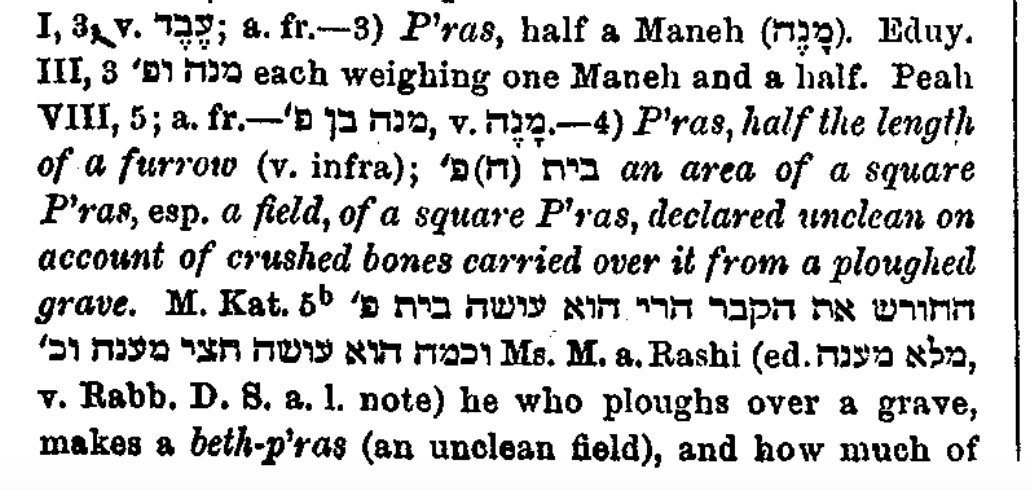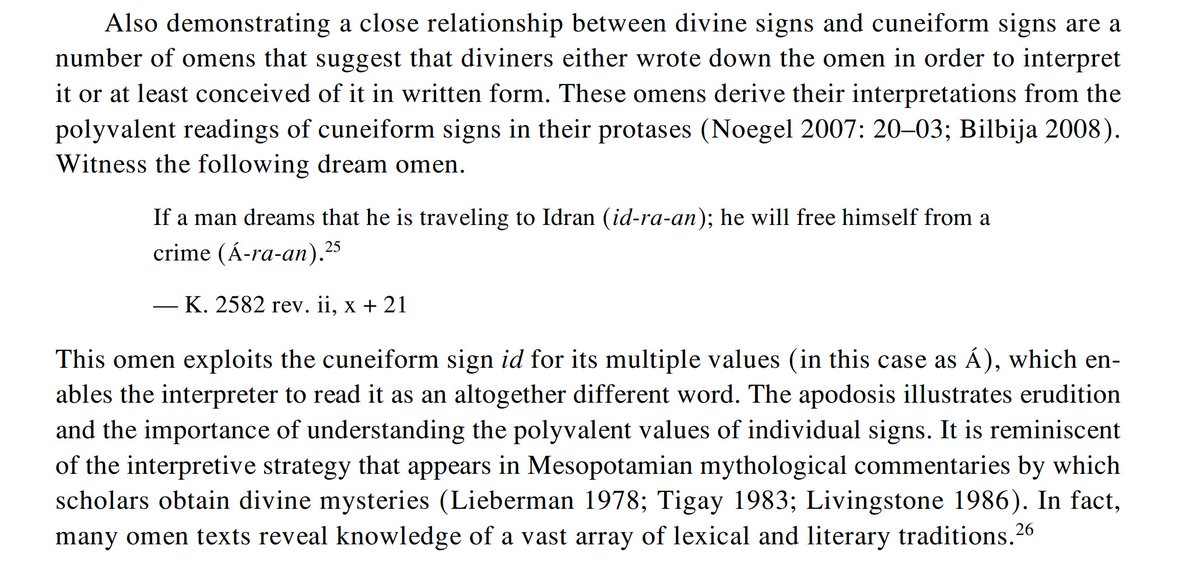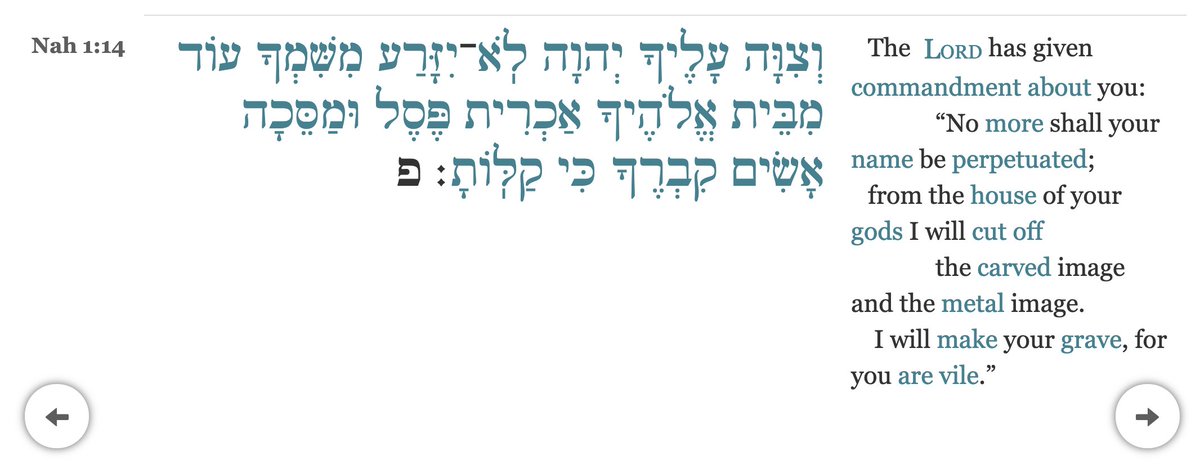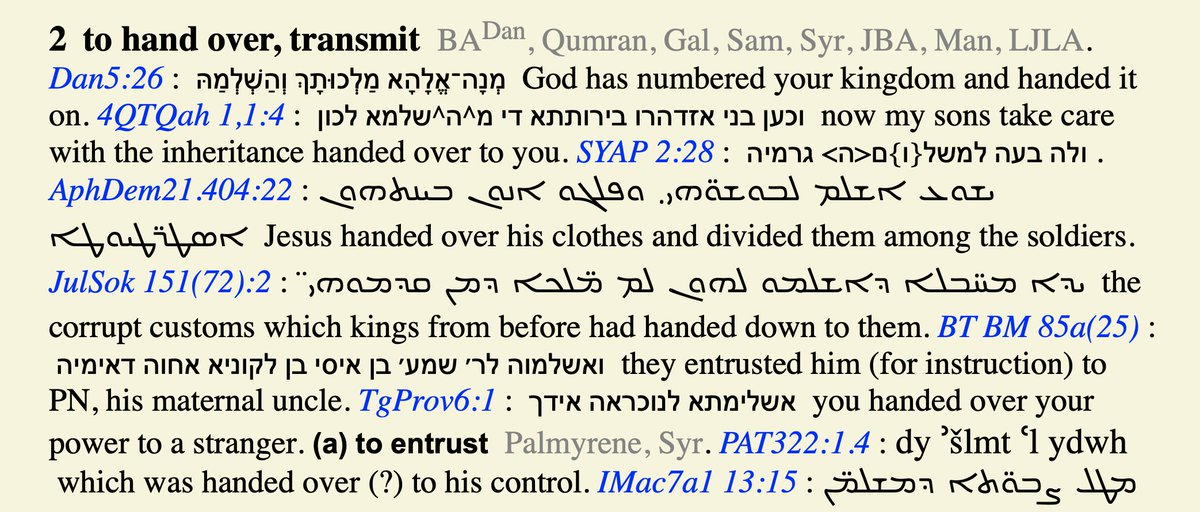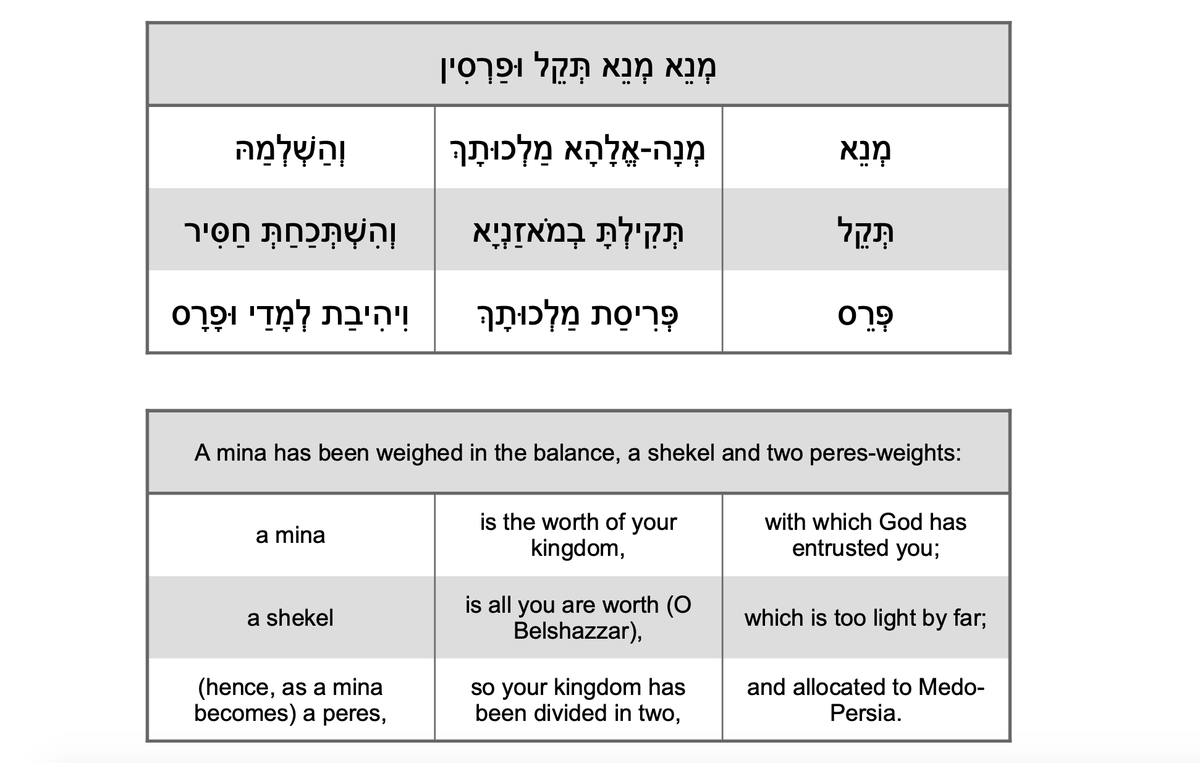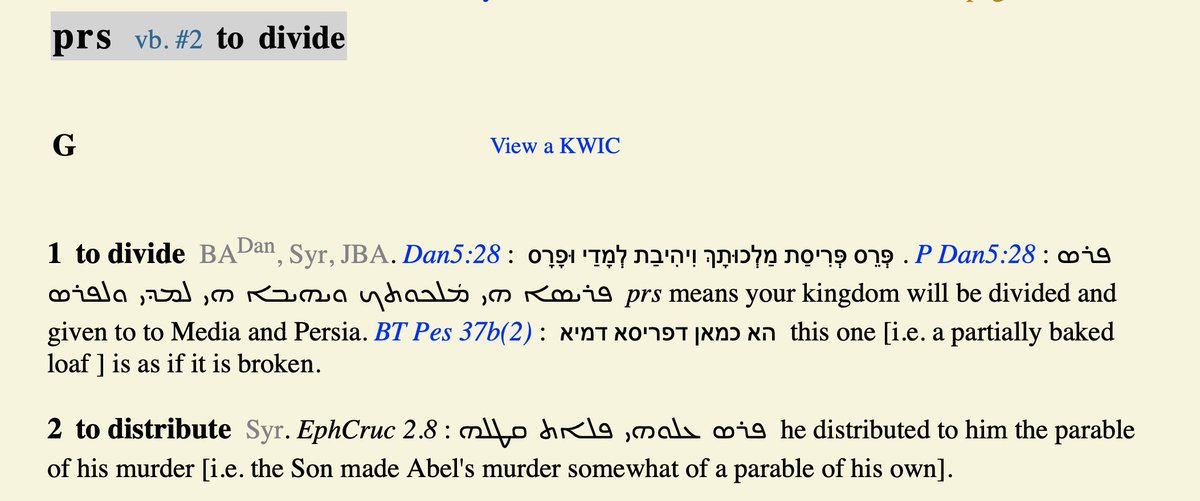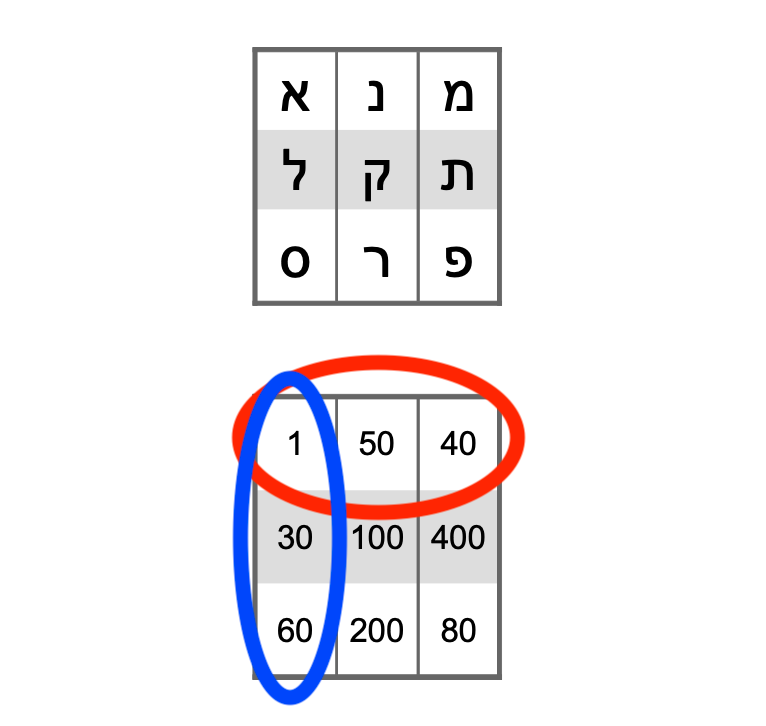THREAD: The Neatness of God’s Handiwork…
SUBTITLE: …despite the Chaos of Man’s Kingships.
(Not a bad thing to bear in mind in the present times.)
SUBTITLE: …despite the Chaos of Man’s Kingships.
(Not a bad thing to bear in mind in the present times.)
Daniel 5 is a remarkable chapter of Scripture.
And it becomes all the more remarkable when we consider:
a] its numerical properties, and
b] its Babylonian background.
And it becomes all the more remarkable when we consider:
a] its numerical properties, and
b] its Babylonian background.
First, then, a word or two on the numbers involved in it.
Daniel 5 is patterned around all sorts of threefold groups and structures.
It consists of three paragraphs and thirty verses.
It consists of three paragraphs and thirty verses.
It contains three notable triplets, namely:
a] Daniel’s trio of attributes (‘light, insight, and wisdom’: 5.11, 14),
b] Daniel’s threefold ability (‘the ability to interpret dreams, explain riddles, and solve problems’: 5.12), and
a] Daniel’s trio of attributes (‘light, insight, and wisdom’: 5.11, 14),
b] Daniel’s threefold ability (‘the ability to interpret dreams, explain riddles, and solve problems’: 5.12), and
c] Belshazzar’s threefold reward (viz., ‘to be clothed in purple, adorned with a gold chain, and made the third most powerful man in the kingdom’),
which is mentioned three times (5.7, 16, 29).
which is mentioned three times (5.7, 16, 29).
Prepositions not counted, the chapter’s third most common words (‘kingdom’ and ‘interpretation’) occur nine times each (3 x 3).
And the chapter comes to its climax (in 5.24–30) with a nine-fold condemnation of Belshazzar’s idolatry,
And the chapter comes to its climax (in 5.24–30) with a nine-fold condemnation of Belshazzar’s idolatry,
…at which point Daniel’s announces the solution to Belshazzar’s riddle,
which he bases on a nine-syllable pronouncement (‘Meneh, Meneh, Teqel, and Parsin’),
and a 3 x 3 grid of letters,
which he bases on a nine-syllable pronouncement (‘Meneh, Meneh, Teqel, and Parsin’),
and a 3 x 3 grid of letters,
With these thoughts in mind, then, let’s consider the context and nature of Belshazzar’s riddle in a bit more detail.
At the outset of ch. 5, Belshazzar throws a party for the thousand most important people in his kingdom.
As the party warms up, Belshazzar decides it might be a good idea to involve God’s vessels in his debauchery.
Suffice it to say, it is not a good idea.
As the party warms up, Belshazzar decides it might be a good idea to involve God’s vessels in his debauchery.
Suffice it to say, it is not a good idea.
Ch. 4 closes with the words ‘no man can stay God’s *hand*’ (4.32).
And, in ch. 5, that hand makes an unwelcome appearance.
To be precise, it etches a series of characters on one of Belshazzar’s walls,
which leaves Belshazzar and his guests speechless (and more besides).
And, in ch. 5, that hand makes an unwelcome appearance.
To be precise, it etches a series of characters on one of Belshazzar’s walls,
which leaves Belshazzar and his guests speechless (and more besides).
The characters are evidently difficult to interpret (since they are unintelligible to Belshazzar),
but they clearly declare an important message.
And Belshazzar’s inability to decipher the characters on his wall makes them seem all the more ominous.
but they clearly declare an important message.
And Belshazzar’s inability to decipher the characters on his wall makes them seem all the more ominous.
Belshazzar therefore calls for help.
First of all he summons Babylon’s wise men and instructs them to read the characters.
Babylon’s wise men, however, are unequal to the task,
which will prove to be their third and final failure in the book of Daniel.
First of all he summons Babylon’s wise men and instructs them to read the characters.
Babylon’s wise men, however, are unequal to the task,
which will prove to be their third and final failure in the book of Daniel.
Belshazzar is, therefore, forced to summon Daniel,
who is not his favourite wise man (for various reasons, which will soon become clear).
who is not his favourite wise man (for various reasons, which will soon become clear).
Unlike the wise men, Daniel is in no doubt as to what the characters say.
He knows the person who wrote them.
Daniel hence reads the letters out to the hushed multitude in a loud and clear voice:
‘Meneh’, ‘Meneh’, ‘Tekel’, and ‘Parsin’. (‘Parsin’ is the plural of ‘Peres’.)
He knows the person who wrote them.
Daniel hence reads the letters out to the hushed multitude in a loud and clear voice:
‘Meneh’, ‘Meneh’, ‘Tekel’, and ‘Parsin’. (‘Parsin’ is the plural of ‘Peres’.)
Daniel goes on to provide an interpretation.
His interpretation consists of three verses,
each of which is composed of three elements:
a] one of the words Daniel has just read out (‘Meneh/Tekel/Peres’),
His interpretation consists of three verses,
each of which is composed of three elements:
a] one of the words Daniel has just read out (‘Meneh/Tekel/Peres’),
b] a statement based on a verbal conjugation of that word’s consonants (e.g., ‘Manah-Elahah malkutak’ = ‘God has assessed your kingdom!’), and
c] a re-analysis of those consonants (to be discussed).
c] a re-analysis of those consonants (to be discussed).
Let me explain. Or at least try to explain.
The best known language in Babylon in Daniel’s day was Aramaic,
which was typically written without vowels.
We can therefore think of the characters on Belshazzar’s wall in terms of a string of consonants—very roughly,
MNHMNHTQLPRSYN
which was typically written without vowels.
We can therefore think of the characters on Belshazzar’s wall in terms of a string of consonants—very roughly,
MNHMNHTQLPRSYN
(Apologies to any Aramaists/etc. present.)
Daniel picks out three triliteral ‘roots’ from these consonants:
«MNH», «TQL», and «PRS».
First, Daniel turns these consonants into known Aramaic words by the insertion of (e) vowels:
‘Meneh’ (5.26), ‘Tekel’ (5.27), and ‘Peres’ (5.28).
«MNH», «TQL», and «PRS».
First, Daniel turns these consonants into known Aramaic words by the insertion of (e) vowels:
‘Meneh’ (5.26), ‘Tekel’ (5.27), and ‘Peres’ (5.28).
As such, Daniel interprets Belshazzar’s riddle, first and foremost, as a series of nouns.
More specifically, he interprets it as a series of nouns which signify *weights*.
More specifically, he interprets it as a series of nouns which signify *weights*.
The word ‘Meneh’ signifies a mina, i.e., 60 shekels.
The word ‘Tekel’ is the Aramaic pronunciation of the word ‘shekel’.
And the word ‘Peres’ can refer to either half a mina or half a shekel…
The word ‘Tekel’ is the Aramaic pronunciation of the word ‘shekel’.
And the word ‘Peres’ can refer to either half a mina or half a shekel…
…though the former would probably have come to mind more naturally.
Indeed, the British Museum presently houses a set of lion weights discovered in Nimrud (Assyria), which date to the 8th cent. BC,
Indeed, the British Museum presently houses a set of lion weights discovered in Nimrud (Assyria), which date to the 8th cent. BC,
one of which (the 10th in the picture above) weighs half a mina and has the consonants «PRS» inscribed on it,
A tablet from the same decade as Belshazzar’s death employs the term «PRS» in precisely the same way,
The first step of Daniel’s interpretation of the characters on the wall is, therefore, clear enough:
Daniel splits up the consonants into groups of three, and interprets them as references to weights (5.25).
Daniel splits up the consonants into groups of three, and interprets them as references to weights (5.25).
The second step in Daniel’s interpretation of the characters (5.26–28) is also clear enough.
In 5.26–28, Daniel interprets each group of consonants not as a noun, but as a *verb*.
In 5.26–28, Daniel interprets each group of consonants not as a noun, but as a *verb*.
He revocalises ‘meneh’ as a conjugation of «MNH» = ‘to reckon/value’,
‘teqel’ as a conjugation of «TQL» = ‘to weigh’,
and ‘peres’ as a conjugation of «PRS» = ‘to divide up, distribute’.
‘teqel’ as a conjugation of «TQL» = ‘to weigh’,
and ‘peres’ as a conjugation of «PRS» = ‘to divide up, distribute’.
The third and final step is to re-analyse these consonants in a more creative/revelatory way. (Details to follow.)
We can, therefore, think of Daniel’s interpretation of the riddle as a 3 x 3 grid,
We can, therefore, think of Daniel’s interpretation of the riddle as a 3 x 3 grid,
A similar notion was proposed by Clermont-Ganneau in 1887 (shown below), though its specifics are different to those proposed above.
A word, then, on Column 3.
When omens are interpreted in Mesopotamian texts—and an omen is surely what the characters on Belshazzar’s wall are—, it’s not uncommon for interpreters to explore the lexical resources of particular words.
When omens are interpreted in Mesopotamian texts—and an omen is surely what the characters on Belshazzar’s wall are—, it’s not uncommon for interpreters to explore the lexical resources of particular words.
Daniel employs a similar method in his interpretation of the riddle on Belshazzar’s wall.
His statement in 5.28—i.e., that Belshazzar’s kingdom will be ‘divided up’ and given to Medo-Persia—is derived from a particular sense of «PRS» (‘to divide up, distribute’)…
…combined with the revocalisation of ‘peres’ (‘a half mina’) as ‘Paras’ (‘Persia’).
…combined with the revocalisation of ‘peres’ (‘a half mina’) as ‘Paras’ (‘Persia’).
His statement in 5.27—i.e., that Belshazzar has been ‘found wanting’—is based on an anagram of ‘tekel’ (תקל),
namely ‘Kalta!’ (קַלְתָ) = ‘you are (too) light’—an accusation very similar to that with which the prophet Nahum seals the king of Assyria’s fate:
namely ‘Kalta!’ (קַלְתָ) = ‘you are (too) light’—an accusation very similar to that with which the prophet Nahum seals the king of Assyria’s fate:
In 5.25, I take the first מְנֵא to be a passive participle (‘has been weighed’), and hence take the vs. to say,
‘A mina has been weighed in the balance, (and) a shekel and two peres-weights (also)’.
In other words, ‘Three weights have been put on the balances’.
‘A mina has been weighed in the balance, (and) a shekel and two peres-weights (also)’.
In other words, ‘Three weights have been put on the balances’.
In 5.26, I take «MNH» to mean ‘to reckon as’ and «ŠLM» to mean ‘to hand over, entrust’ (cp. above).
I hence take vs. 26 to mean,
‘God has assessed the worth of your kingdom as a mina, and has entrusted it to you’.
I hence take vs. 26 to mean,
‘God has assessed the worth of your kingdom as a mina, and has entrusted it to you’.
Babylon is a valuable possession—a superpower in the ANE, whose empire provides a home to God’s people.
To be entrusted with Babylon is, therefore, a grave responsibility.
To be entrusted with Babylon is, therefore, a grave responsibility.
In terms of vs. 27, I would then suggest the translation,
‘You, (O Belshazzar), a mere shekel, have been weighed in the balances and found wanting!’.
Given its position/status in the ANE, the king of Babylon must be a man of sufficient weight/dignity,
which Belshazzar is not.
‘You, (O Belshazzar), a mere shekel, have been weighed in the balances and found wanting!’.
Given its position/status in the ANE, the king of Babylon must be a man of sufficient weight/dignity,
which Belshazzar is not.
Like his wise men, he has been found unequal to his task.
Finally, in 5.28, I take the consonants «PRS» to bring to mind both the two half-minas (‘parsin’) mentioned above in 5.25 as well as the sense ‘to (re)distribute, allot’…
Finally, in 5.28, I take the consonants «PRS» to bring to mind both the two half-minas (‘parsin’) mentioned above in 5.25 as well as the sense ‘to (re)distribute, allot’…
I would therefore suggest the translation, ‘Your kingdom has been divided in two, and has been given/handed over to Media and Persia (to govern)’.
As such, the flow of events in 5.26–28 is as follows.
God has determined a kind of ‘mina of the land/kingdom’.
He has determined the worth of Babylon and the kind of man required to rule it.
God has determined a kind of ‘mina of the land/kingdom’.
He has determined the worth of Babylon and the kind of man required to rule it.
Belshazzar, however, does not measure up to God’s standard.
He is too ‘light/contemptible’ a ruler for Babylon.
His kingdom will hence be divvied up and (re)distributed to a twofold empire, viz. Medo-Persia.
He is too ‘light/contemptible’ a ruler for Babylon.
His kingdom will hence be divvied up and (re)distributed to a twofold empire, viz. Medo-Persia.
ASSESSMENT
The view of Dan. 5.25–28 set out above has a number of points in its favour
It explains why Belshazzar’s riddle (5.25) mentions the particular weights it does:
in 5.26, God states what he requires of Babylon’s ruler—a *sixty-shekel* king;
The view of Dan. 5.25–28 set out above has a number of points in its favour
It explains why Belshazzar’s riddle (5.25) mentions the particular weights it does:
in 5.26, God states what he requires of Babylon’s ruler—a *sixty-shekel* king;
in 5.27, God assesses Belshazzar against the required standard and finds him inadequate—a mere *shekel* of a man;
and, in 5.28, God appoints a new (sixty-shekel) government, which consists of two *thirty-shekel* kingships.
and, in 5.28, God appoints a new (sixty-shekel) government, which consists of two *thirty-shekel* kingships.
It explains why 5.25 mentions two peres-weights (‘parsin’) rather than just one (‘peres’).
It explains why the king is forced to recognise Daniel’s solution to his riddle as unquestionably correct. (It fits the details perfectly.)
It explains why the king is forced to recognise Daniel’s solution to his riddle as unquestionably correct. (It fits the details perfectly.)
And it highlights important numerical aspects of our text.
As we’ve noted, Daniel’s solution to the riddle begins with a nine-syllable pronouncement (‘Meneh, Meneh, Teqel, and Parsin’),
which Daniel reduces to a 3 x 3 grid of letters,
As we’ve noted, Daniel’s solution to the riddle begins with a nine-syllable pronouncement (‘Meneh, Meneh, Teqel, and Parsin’),
which Daniel reduces to a 3 x 3 grid of letters,
which he then employs to generate a 3 x 3 interpretation of Belshazzar’s riddle.
Daniel’s solution is also, however, significant in other ways.
Daniel’s solution is also, however, significant in other ways.
And the uppermost row and leftmost column of its 3 x 3 grid of consonants both have a gematrial value of 91,
which happens to be the sum of the three weights mentioned in Belshazzar’s riddle, namely,
a mina = 60 shekels,
a shekel = 1 shekel, and
a half-mina = 30 shekels.
Indeed, the letters in the leftmost column of Daniel’s 3 x 3 grid have the values 1, 60, and 30.
a mina = 60 shekels,
a shekel = 1 shekel, and
a half-mina = 30 shekels.
Indeed, the letters in the leftmost column of Daniel’s 3 x 3 grid have the values 1, 60, and 30.
Re-analysis of these numbers can then highlight further connections between 5.25–28 and its immediate environment.
If we interpret ‘parsin’ as a reference to two half-*shekels* (rather than half-minas),
then we end up with a mina, a shekel, and two half-shekels—i.e., 62 shekels—,
then we end up with a mina, a shekel, and two half-shekels—i.e., 62 shekels—,
which curiously anticipates the 62-year-old governor (Darius) who arrives in 6.1.
(Why would we need to know Darius’s age?)
(Why would we need to know Darius’s age?)
Meanwhile, if we revert to our previous interpretation of ‘parsin’, then we end up with a mina, a shekel, and two half-minas—i.e., 121 shekels—,
which curiously anticipates Babylon’s new 121-man government (Darius and his 120 satraps: 6.2).
which curiously anticipates Babylon’s new 121-man government (Darius and his 120 satraps: 6.2).
Hence, just as the lexical properties of Belshazzar’s riddle have numerous implications, so too do its numerical properties.
Also important to bear in mind is the way in which Daniel’s solution to the riddle fulfils the role of an interpretation (a ‘pāšir’) as it is typically understood in Mesopotamian omen texts.
Typically, the ‘pišru’ (an Akkadian term, the Sumerian equivalent of which is BÚR) of a dream doesn’t just entail an ‘explanation/exegesis’ of it.
It entails ‘the translation of a dream’s symbols…into an unequivocally worded message’ and, by extension, the ‘dissolution of its evil implications’.
Hence, for instance, the Mesopotamian deity Anum is referred to as an interpreter (pāšir/mupaššir),
Hence, for instance, the Mesopotamian deity Anum is referred to as an interpreter (pāšir/mupaššir),
which, Oppenheim says, can’t plausibly be taken to mean ‘one who *explains* dreams’;
it must, rather, mean ‘one who *dispels/removes* the consequences of dreams’,
especially once the parallel epithet pāšir kišpi = ‘one who removes (evil) magic’ is considered.
it must, rather, mean ‘one who *dispels/removes* the consequences of dreams’,
especially once the parallel epithet pāšir kišpi = ‘one who removes (evil) magic’ is considered.
Such a view of a pišru, Oppenheim goes on to say, is in perfect harmony with the semantic range of the consonants «PŠR» = ‘to release, remove, dispose of, relax, loosen, untie’ (Oppenheim 1956:218–220, 1974:208–210).
It is also in perfect harmony with 5.12’s description of Daniel as a man who is able to ‘loosen knots’.
When we view Daniel’s activities in ch. 5 in light of the above backdrop, it makes a lot of sense of what might otherwise seem to be an unusual sequence of events...
...in which Belshazzar rewards Daniel for his announcement of Babylon’s doom.
...in which Belshazzar rewards Daniel for his announcement of Babylon’s doom.
As Oppenheim says, once a dream has been interpreted and its mystery hence removed, the dream is thought to have been depotentised, even if its consequences remain to be dealt with (Ibid.).
In the context of ch. 5, then, Belshazzar may well have viewed Daniel’s interpretation as helpful to him.
If so, he hadn’t banked on a simple but important fact.
The word of YHWH’s prophets is very different from the magic and manipulation practiced in Mesopotamia,...
If so, he hadn’t banked on a simple but important fact.
The word of YHWH’s prophets is very different from the magic and manipulation practiced in Mesopotamia,...
...since YHWH is a very different deity to the gods of Babylon.
What YHWH says invariably comes to pass.
And it does so in remarkably neat and frequently ironic ways.
THE END.
Credits: Al Wolters, 1991. ‘The Riddle of the Scales in Daniel 5’ in HUCA (Vol. 62).
What YHWH says invariably comes to pass.
And it does so in remarkably neat and frequently ironic ways.
THE END.
Credits: Al Wolters, 1991. ‘The Riddle of the Scales in Daniel 5’ in HUCA (Vol. 62).

 Read on Twitter
Read on Twitter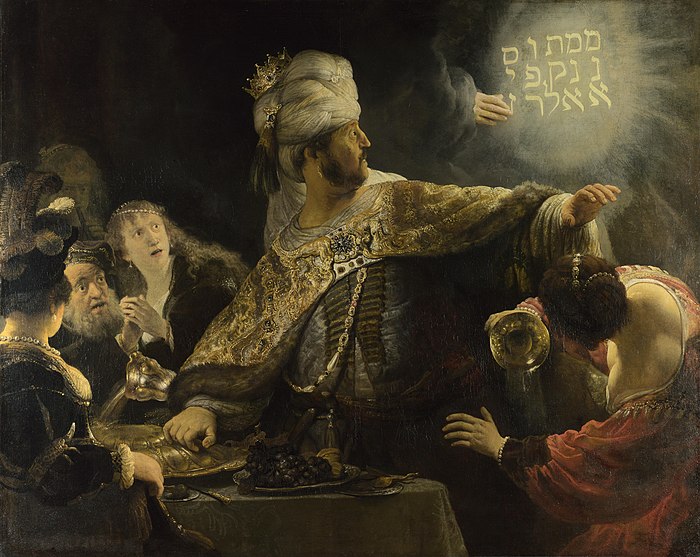


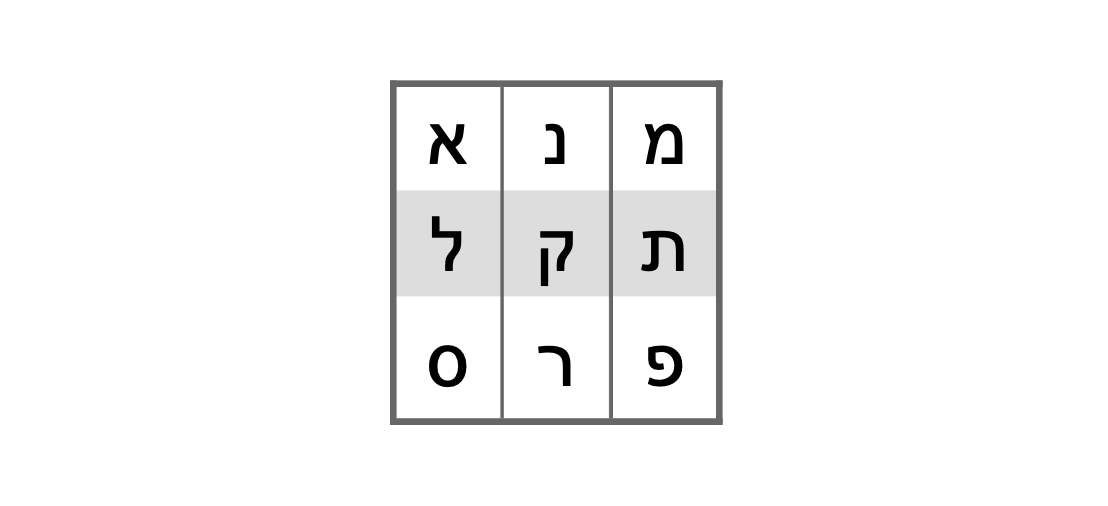



![b] a statement based on a verbal conjugation of that word’s consonants (e.g., ‘Manah-Elahah malkutak’ = ‘God has assessed your kingdom!’), andc] a re-analysis of those consonants (to be discussed). b] a statement based on a verbal conjugation of that word’s consonants (e.g., ‘Manah-Elahah malkutak’ = ‘God has assessed your kingdom!’), andc] a re-analysis of those consonants (to be discussed).](https://pbs.twimg.com/media/EhGfjcBWAAQeFvD.png)





